Since we use the hard sphere model, each point inside the cell is either part of an atom, or part of the void.if(typeof ez_ad_units != 'undefined'){ez_ad_units.push([[300,250],'msestudent_com-large-leaderboard-2','ezslot_6',124,'0','0'])};__ez_fad_position('div-gpt-ad-msestudent_com-large-leaderboard-2-0'); APF is basically the fraction of atoms to void. Since HCP is one of the most common crystal structures, there are many materials to choose from! To the naked eye, gasoline is a pretty uninteresting yellowish-brown liquid. The area of the hexagon is just 6 equilateral triangles. You can see the number of bonding electrons and nonbonding electrons for each atom of HCP molecule in the image given below. Start typing to see posts you are looking for. The HCP crystal structure is based on the Bravais lattice of the same name, with 1 atom per lattice point at each corner of the hexagonal prism, and 3 inside the prism. The Phosphorus atom has 1 lone pair. This list is not comprehensive; HCP can also be found in high temperature/pressure phases, or in alloys. A single covalent bond connects the hydrogen and chlorine atoms. Fill out. The volume of Hcp Unit Cell = 33ac/2. Total shared/bonding electrons: 18 14 = 4 (In other words, there are only two single bonds.) HCP has 6 atoms per unit cell, lattice constant a = 2r and c = (46r)/3 (or c/a ratio . The bond angle is 180. I already mentioned this before, but both the conventional and primitive HCP cells are commonly used. For Hydrogen (H) atom:Valence electron = 1 (because hydrogen is in group 1)Bonding electrons = 2Nonbonding electrons = 0, For Carbon (C) atom:Valence electrons = 4 (because carbon is in group 14)Bonding electrons = 8Nonbonding electrons = 0, For Phosphorus (P) atom:Valence electrons = 5 (because phosphorus is in group 15)Bonding electrons = 6Nonbonding electrons = 2. You can also visualize the primitive HCP cell, which has an atom at each of 8 corners and another one near the center. If you go through the math, youll find that c should be about 1.6a in a perfect HCP crystal. And the structure with the formal charges on atoms closer to zero is the best Lewis structure. Put least electronegative atom in centre3. For that, you need to remember the formula of formal charge; Formal charge = Valence electrons Nonbonding electrons (Bonding electrons)/2. HCP lewis structure has a Carbon atom (C) at the center which is surrounded by one Hydrogen atom (H) and one Oxygen atom (O). Save my name, email, and website in this browser for the next time I comment. In the hcp structure of an unit cell contains three types of atoms as three layers. There is also a half atom on the top and bottom faces, which adds to 1 more whole atom. Your email address will not be published. Simple Hexagonal4a. Chlorine has a greater electronegative potential than hydrogen. Once you get the total number of valence electrons, you can make a Lewis dot structure of HCN. It is a simple diatomic molecule. The Carbon atom (C) is at the center and it is surrounded by Hydrogen (H) and Phosphorus atom (P). B-H vs M-H Hysteresis Loops: Magnetic Induction vs Magnetization (Similarities, Differences, and Points on the Graph), What is Scanning Electron Microscopy? Hence there is no change in the above sketch of HCP.if(typeof ez_ad_units!='undefined'){ez_ad_units.push([[336,280],'knordslearning_com-leader-4','ezslot_8',145,'0','0'])};__ez_fad_position('div-gpt-ad-knordslearning_com-leader-4-0'); In this step, we have to check whether the central atom (i.e carbon) has an octet or not. [3] Hence the valence electrons present in phosphorus is 5. Because the angles of an equilateral triangle are all 60, the angle between and is 30. Draw the Lewis structure for NO 3- and HCP. ISBN: 9780078746376. 28 Nov 2020. To summarize everything in this article, we can say that: To read, write and know something new every day is the only way I see my day! Lets start by calculating the area of a single triangle. We also acknowledge previous National Science Foundation support under grant numbers 1246120, 1525057, and 1413739. tanpug262. A full analysis of the molecule that can be attained from Lewis Dot Diagrams. Now here the given molecule is HCP and it contains hydrogen atom (H), carbon atom (C) and phosphorus atom (P). CuNiSb 2 Structure: ABC2_hP4_164_a_b_d. The layer stacking sequence in this structure (including fluoride ions in the T+ and T- sites) is: Polyhedral view of the fluorite crystal structure, showing T+ and T- Ca4F tetrahedra. The best Lewis structure of HCP has one nonbonding pair on carbon two nonbonding pairs on carbon. It is also known as muriatic acid or hydrogen chloride. We are also attempting to create a structure with the least amount of formal charge possible. Science Chemistry Chemistry questions and answers How many sigma bonds, pi bonds, and lone pairs are in HCP? There is a triple bond between the Carbon (C) & Phosphorus (P) atom and a single bond between Carbon (C) & Hydrogen (H) atom. Therefore, place carbon in the center and hydrogen and phosphorus on either side. Place the Hydrogen and Nitrogen atoms on both terminal sides of the Carbon like this: Once you have arranged the atoms, start placing the valence electrons around individual atoms. HCP (methylidynephosphane) has one hydrogen atom, one carbon atom, and one phosphorus atom. For selecting the center atom, you have to remember that the atom which is less electronegative remains at the center. draw and label basic BCC, FCC and HCP structure and list all material attributes associated with each structure as well as typical materials and there use. Jay is an educator and has helped more than 100,000 students in their studies by providing simple and easy explanations on different science-related topics. The information on this page is fact-checked. Whereas Carbon has four valence electrons and Nitrogen has five valence electrons. 2 base centered atoms, one at the top face of the hexagon and another at the bottom face of the hexagon. If you count the portion of atoms in the cell, of each vertex atom would count. The molecular Geometry of any given molecule helps understand its three-dimensional structure and the arrangement of atoms in a molecule, and its shape. Some metals with hexagonal close-packed crystal structures include cobalt, cadmium, zinc, and the phase of titanium. (Valence electrons are the number of electrons present in the outermost shell of an atom). #1 Draw a rough sketch of the structure. The resonance forms with the fewest non-zero formal charge atoms are selected. Diamond Cubic3. Legal. Total number of valence electrons in HCN= No. I will read more of your articles. Step 6: Check the stability of the structure, Formal charge = Valence Electrons Unbonded Electrons Bonded Electrons, Shared pair electrons (1 single bond) = 2. Here in the HCP molecule, hydrogen (H) will always remain outside as per the rule. Structure World: Zincblende (ZnS) Examples of compounds with the zincblende structure include CuCl, CuI, ZnSe, HgS, BeS, CdTe, AlP, GaP, SnSb, CSi, and diamond. For example, titanium is ductile at room temperature, but zinc will only become ductile after its heated. BUY. The H 2 S molecule possesses a mutual bond angle of 92.1 between the bonded atoms. He is a founder of Pediabay and is passionate about helping students through his easily digestible explanations. There are lighly packed and heavier packed HCP structers, What are their molecular geometries? Here, the outside atoms are hydrogen and phosphorus. The zincblende and wurtzite structures have efficient packing arrangements for tetrahedrally bonded networks and are commonly found in compounds that have tetrahedral bonding. The molecular geometry or shape of H 2 S is bent, angular or V-shaped. Since the overall formal charge is zero, the above Lewis structure of HCl is most appropriate, reliable, and stable in nature. As you can see from the above image, the central atom (i.e carbon) has only 4 electrons. TeF5- lewis structure has a Tellurium atom (Te) at the center which is surrounded by five Fluorine atoms (F). Hexagonal Close-Packed4b. Hydrogen Cyanide is a colorless, flammable, and poisonous chemical liquid. To the right of GaSe, the structures of As, Sb, and SbAs show an ever further breakdown of the structure into layers as more valence electrons are added. HCP has two types of interstitial sites: octahedral and tetrahedral. Calculating is a bit trickier, but it can be done with trigonometry. It is highly corrosive and has a distinct pungent odour. Hexagonal ice is the most stable polymorph of ice, which is obtained upon freezing at 1 atmosphere pressure. Chemistry: Ch. 10 Flashcards | Quizlet Body-Centered Orthorhombic12. And so Carbon will share its remaining three electrons with Nitrogen to complete its octet, resulting in the formation of a triple bond between Carbon and Nitrogen. In order to draw the lewis structure of HCP, first of all you have to find the total number of valence electrons present in the HCP molecule. Each side of the triangle has a length , so lets use that as our base. If you look at the central atom in the primitive cell, you can see that it has a distance between the atoms in the plane above and in the plane below. This makes the molecule polar in nature. Hence Hydrogen Cyanide has linear molecular geometry. This is an important concept in your introductory materials science class, so if you want a full explanation of APF, check out this page. The Ca2+ ions are stacked ABCABC along the body diagonal of the unit cell, which is the vertical direction in this image. HCP is one of the most common structures for metals. Now in the HCP molecule, you have to put the electron pairs between the carbon (C) & hydrogen (H) atom and between the carbon (C) & phosphorus (P) atom. Some compounds are diamorphic and can have either the zincblende or wurtzite structure. Simple Tetragonal7. It turns out that face-centered cubic and hexagonal close-packed crystal structures pack atoms equally tightly. Carbon forms one single bond with the Hydrogen atom and forms a triple bond with the Nitrogen atom. What is the Lewis structure for HClO? - Chemistry Stack Exchange Which is the most important river in Congo. H2S Molecular geometry or shape, electron geometry, Bond angle In the structure, hydrogen bonding enforces the tetrahedral coordination of each water molecule, resulting in a relatively open structure that is less dense than liquid water. I am glad that you enjoyed the article. When atoms with different electronegativities share electrons in a covalent bond, a polar covalent bond forms. The three interpenetrating fcc lattices have Ca at 0,0,0 , 1/2,1/2,0 , etc.F at 1/4,1/4,1/4 , 3/4,3/4,1/4 , etc and F at 3/4,3/4,3/4 , 1/4,1/4/3/4 , etc. A stoichiometry of either M 2 X or MX 2 gives a structure that fills all tetrahedral sites, while an MX structure fills only half of the sites. Place the least electronegative atom at the center. Similarly, as Nitrogen is more electronegative than Carbon, the vector will be towards Nitrogen from Carbon. Another compound that has a triple bond is acetylene (C 2 H 2 ), whose Lewis diagram is as follows: Example 4.4. FCC. BCC and HCP Metals - University of Rhode Island 8: Ionic and Covalent Solids - Structures, Book: Introduction to Inorganic Chemistry (Wikibook), { "8.01:_Prelude_to_Ionic_and_Covalent_Solids_-_Structures" : "property get [Map MindTouch.Deki.Logic.ExtensionProcessorQueryProvider+<>c__DisplayClass228_0.b__1]()", "8.02:_Close-packing_and_Interstitial_Sites" : "property get [Map MindTouch.Deki.Logic.ExtensionProcessorQueryProvider+<>c__DisplayClass228_0.b__1]()", "8.03:_Structures_Related_to_NaCl_and_NiAs" : "property get [Map MindTouch.Deki.Logic.ExtensionProcessorQueryProvider+<>c__DisplayClass228_0.b__1]()", "8.04:_Tetrahedral_Structures" : "property get [Map MindTouch.Deki.Logic.ExtensionProcessorQueryProvider+<>c__DisplayClass228_0.b__1]()", "8.05:_Layered_Structures_and_Intercalation_Reactions" : "property get [Map MindTouch.Deki.Logic.ExtensionProcessorQueryProvider+<>c__DisplayClass228_0.b__1]()", "8.06:_Bonding_in_TiS_MoS_and_Pyrite_Structures" : "property get [Map MindTouch.Deki.Logic.ExtensionProcessorQueryProvider+<>c__DisplayClass228_0.b__1]()", "8.07:_Spinel_Perovskite_and_Rutile_Structures" : "property get [Map MindTouch.Deki.Logic.ExtensionProcessorQueryProvider+<>c__DisplayClass228_0.b__1]()", "8.08:_Discussion_Questions" : "property get [Map MindTouch.Deki.Logic.ExtensionProcessorQueryProvider+<>c__DisplayClass228_0.b__1]()", "8.09:_Problems" : "property get [Map MindTouch.Deki.Logic.ExtensionProcessorQueryProvider+<>c__DisplayClass228_0.b__1]()", "8.10:_References" : "property get [Map MindTouch.Deki.Logic.ExtensionProcessorQueryProvider+<>c__DisplayClass228_0.b__1]()" }, { "00:_Front_Matter" : "property get [Map MindTouch.Deki.Logic.ExtensionProcessorQueryProvider+<>c__DisplayClass228_0.b__1]()", "01:_Review_of_Chemical_Bonding" : "property get [Map MindTouch.Deki.Logic.ExtensionProcessorQueryProvider+<>c__DisplayClass228_0.b__1]()", "02:_Molecular_Orbital_Theory" : "property get [Map MindTouch.Deki.Logic.ExtensionProcessorQueryProvider+<>c__DisplayClass228_0.b__1]()", "03:_Acid-Base_Chemistry" : "property get [Map MindTouch.Deki.Logic.ExtensionProcessorQueryProvider+<>c__DisplayClass228_0.b__1]()", "04:_Redox_Stability_and_Redox_Reactions" : "property get [Map MindTouch.Deki.Logic.ExtensionProcessorQueryProvider+<>c__DisplayClass228_0.b__1]()", "05:_Coordination_Chemistry_and_Crystal_Field_Theory" : "property get [Map MindTouch.Deki.Logic.ExtensionProcessorQueryProvider+<>c__DisplayClass228_0.b__1]()", "06:_Metals_and_Alloys-_Structure_Bonding_Electronic_and_Magnetic_Properties" : "property get [Map MindTouch.Deki.Logic.ExtensionProcessorQueryProvider+<>c__DisplayClass228_0.b__1]()", "07:_Metals_and_Alloys_-_Mechanical_Properties" : "property get [Map MindTouch.Deki.Logic.ExtensionProcessorQueryProvider+<>c__DisplayClass228_0.b__1]()", "08:_Ionic_and_Covalent_Solids_-_Structures" : "property get [Map MindTouch.Deki.Logic.ExtensionProcessorQueryProvider+<>c__DisplayClass228_0.b__1]()", "09:_Ionic_and_Covalent_Solids_-_Energetics" : "property get [Map MindTouch.Deki.Logic.ExtensionProcessorQueryProvider+<>c__DisplayClass228_0.b__1]()", "10:_Electronic_Properties_of_Materials_-_Superconductors_and_Semiconductors" : "property get [Map MindTouch.Deki.Logic.ExtensionProcessorQueryProvider+<>c__DisplayClass228_0.b__1]()", "11:_Basic_Science_of_Nanomaterials" : "property get [Map MindTouch.Deki.Logic.ExtensionProcessorQueryProvider+<>c__DisplayClass228_0.b__1]()", "12:_Resources_for_Students_and_Teachers" : "property get [Map MindTouch.Deki.Logic.ExtensionProcessorQueryProvider+<>c__DisplayClass228_0.b__1]()", "13:_Metals_and_Alloys_-_Mechanical_Properties" : "property get [Map MindTouch.Deki.Logic.ExtensionProcessorQueryProvider+<>c__DisplayClass228_0.b__1]()", "zz:_Back_Matter" : "property get [Map MindTouch.Deki.Logic.ExtensionProcessorQueryProvider+<>c__DisplayClass228_0.b__1]()" }, [ "article:topic", "showtoc:no", "license:ccbysa", "fluorite (structure)", "licenseversion:40", "authorname:chem310", "source@https://en.wikibooks.org/wiki/Introduction_to_Inorganic_Chemistry" ], https://chem.libretexts.org/@app/auth/3/login?returnto=https%3A%2F%2Fchem.libretexts.org%2FBookshelves%2FInorganic_Chemistry%2FBook%253A_Introduction_to_Inorganic_Chemistry_(Wikibook)%2F08%253A_Ionic_and_Covalent_Solids_-_Structures%2F8.04%253A_Tetrahedral_Structures, \( \newcommand{\vecs}[1]{\overset { \scriptstyle \rightharpoonup} {\mathbf{#1}}}\) \( \newcommand{\vecd}[1]{\overset{-\!-\!\rightharpoonup}{\vphantom{a}\smash{#1}}} \)\(\newcommand{\id}{\mathrm{id}}\) \( \newcommand{\Span}{\mathrm{span}}\) \( \newcommand{\kernel}{\mathrm{null}\,}\) \( \newcommand{\range}{\mathrm{range}\,}\) \( \newcommand{\RealPart}{\mathrm{Re}}\) \( \newcommand{\ImaginaryPart}{\mathrm{Im}}\) \( \newcommand{\Argument}{\mathrm{Arg}}\) \( \newcommand{\norm}[1]{\| #1 \|}\) \( \newcommand{\inner}[2]{\langle #1, #2 \rangle}\) \( \newcommand{\Span}{\mathrm{span}}\) \(\newcommand{\id}{\mathrm{id}}\) \( \newcommand{\Span}{\mathrm{span}}\) \( \newcommand{\kernel}{\mathrm{null}\,}\) \( \newcommand{\range}{\mathrm{range}\,}\) \( \newcommand{\RealPart}{\mathrm{Re}}\) \( \newcommand{\ImaginaryPart}{\mathrm{Im}}\) \( \newcommand{\Argument}{\mathrm{Arg}}\) \( \newcommand{\norm}[1]{\| #1 \|}\) \( \newcommand{\inner}[2]{\langle #1, #2 \rangle}\) \( \newcommand{\Span}{\mathrm{span}}\)\(\newcommand{\AA}{\unicode[.8,0]{x212B}}\), 8.5: Layered Structures and Intercalation Reactions, source@https://en.wikibooks.org/wiki/Introduction_to_Inorganic_Chemistry. Once again, the pythagorean theorem saves the day! See Answer And here is why: Carbon has an electronegativity of 2.5, Hydrogens electronegativity is 2.1, and Nitrogen has an electronegativity of 3. Want to see the full answer? The centre atom in layer B is surrounded by 6 atoms from the same layer, as well as 3 atoms from the top and bottom layers. Also, in step 1 we have calculated the total number of valence electrons present in the HCP molecule. Put one electron pair in each bond4. As a close-packed structure, the HCP crystal has the number of nearest-neighbors (NN): 12. As Carbon is bonded to two atoms, it follows the molecular geometry of AX2. What are their molecular geometries? Chemistry questions and answers. A H-PEc: H-C: D H=P=c: E H=C=P P. Expert Solution. Phosphorus is a group 15 element on the periodic table. This structure helps in understanding the arrangement of valence electrons around the atoms in the molecule. + 20. The rest two electrons are nonbonding electrons. tanpug262 Lv1. Lewis Structure of HCP (With 6 Simple Steps to Draw!) Hexagonal Close Packed Crystal Structure (HCP) Carbon has only 4 electrons and it is unstable. The Hexagonal Close-Packed (HCP) crystal structure is one of the most common ways for atoms to arrange themselves in metals. The Hexagonal Close-Packed (HCP) crystal structure is one of the most common ways that atoms can be arranged in pure solids. The coordination number of an hcp crystal structure is 12. Carbon is the central atom. The zincblende structure, shown below, can be thought of as two interpenetrating fcc lattices, one of anions and one of cations, offset from each other by a translation of 1/4 along the body diagonal of the unit cell. a non-bonding pair of electrons a shared . If you havent understood anything from the above image of HCP lewis structure, then just stick with me and you will get the detailed step by step explanation on drawing a lewis structure of HCP. The packing atom in fluorite is Ca2+ and the structure is composed of three interpenetrating fcc lattices. Examples of these compounds that have intermediate polarities include CdS and ZnS. I am sure you will definitely learn how to draw lewis structure of HCP). We can call this . Hydrocarbon structures and isomers (article) | Khan Academy Transcribed Image Text: Use the octet rule and formal charges to select the best Lewis structure for HCP. In contrast, the hcp relative of the fluorite structure is quite rare because of unfavorable close contacts between like-charged ions. The zincblende and wurtzite structures are 1:1 tetrahedral structures based on fcc and hcp lattices, respectively. nous utilisons les cookies afin de personnaliser le contenu et les publicits, de fournir des fonctionnalits pour les rseaux sociaux et analyser notre traffic. While cubes may easily be stacked to fill up all empty space, unfilled space will always exist in the packing of spheres. HCP is a close-packed structure with AB-AB stacking.if(typeof ez_ad_units != 'undefined'){ez_ad_units.push([[300,250],'msestudent_com-medrectangle-4','ezslot_1',143,'0','0'])};__ez_fad_position('div-gpt-ad-msestudent_com-medrectangle-4-0'); Dont worry, Ill explain what those numbers mean and why theyre important later in the article. (Properties, Applications, and Metallurgy), Why Mercury is Used in Thermometers (and Modern Alternatives), Common Examples of Hexagonal Close-Packed Materials, Hexagonal Close-Packed Coordination Number, Hexagonal Close-Packed Atomic Packing Factor, Primitive Hexagonal Close-Packed Unit Cell, Interstitial Sites in Hexagonal Close-Packed. Thank you! And phosphorus is a period 3 element, so it can keep more than 8 electrons in its last shell. These tetrahedral atoms can be 0.225R, where r is the radius of the lattice atoms. simple HCP crystal structure seem to have 7 at the bottom, 3 in the In order to check the stability of the central carbon (C) atom, we have to check whether it is forming an octet or not. of valence electrons in Carbob+ No.of valence electrons in Nitrogen. I learned so much from you. An example of an MX2 structure is fluorite, CaF2, whose structure is shown in the figure at the left. As Carbon is the least electronegative atom in this molecule, it will take the central position. [2] Hence the valence electrons present in carbon is 4. A stoichiometry of either M2X or MX2 gives a structure that fills all tetrahedral sites, while an MX structure fills only half of the sites. HCP lewis structure has a Carbon atom (C) at the center which is surrounded by one Hydrogen atom (H) and one Oxygen atom (O). As both Hydrogen and Nitrogen are placed far from each other at bond angles of 180 degrees, it forms a linear shape. This position is the center of the equilateral triangle. Now in this step, you have to check the stability of the outer atoms. Here is a summary chart of all HCP crystal properties:if(typeof ez_ad_units != 'undefined'){ez_ad_units.push([[300,250],'msestudent_com-large-mobile-banner-2','ezslot_8',147,'0','0'])};__ez_fad_position('div-gpt-ad-msestudent_com-large-mobile-banner-2-0'); If you want to know more about the basics of crystallography, check out this article about crystals and grains. And as per VSEPR theory, molecules covered under AX2 have a linear molecular geometry. and M2X compounds (Li2O). The bond angles of HCN is 180 degrees. -La ( A3) Structure: A_hP4_194_ac. In order to find the total valence electrons in HCP molecule, first of all you should know the valence electrons present in hydrogen atom, carbon atom as well as phosphorus atom. Accessibility StatementFor more information contact us atinfo@libretexts.org. ), Lewis Structure of TeF6 (With 5 Simple Steps to Draw! See Solution. Simple Monoclinic13. Now lets proceed to the final step to check whether the lewis structure of HCP is stable or not. (Valence electrons are the electrons that are present in the outermost orbit of any atom.). So you have seen the above image by now, right? H 2 S does not possess any hybridization as per Drago's rule. For a full article explaining APF, check out this link. The hcp structure contains 6 atoms per unit cell. To draw the Lewis dot structure of any molecule, it is essential to know the total number of valence electrons in the structure. That is exactly the same value as face-centered cubic (FCC) crystals, because both HCP and FCC are close-packed structures with the maximum possible APF (although it is possible to have higher packing if you use multiple kinds of atoms with different sizes). I write all the blogs after thorough research, analysis and review of the topics. As a result, the wurtzite structure tends to favor more polar or ionic compounds (e.g., ZnO, NH4+F-) than the zincblende structure. So, lets calculate this first.if(typeof ez_ad_units!='undefined'){ez_ad_units.push([[300,250],'knordslearning_com-medrectangle-4','ezslot_13',134,'0','0'])};__ez_fad_position('div-gpt-ad-knordslearning_com-medrectangle-4-0'); Hydrogen is a group 1 element on the periodic table. Hexagonal close-packed structure | crystallography | Britannica Here, both carbon and phosphorus atoms have charges, so mark them on the sketch as follows: The above structure is not a stable Lewis structure because both carbon and phosphorus atoms have charges. So both Carbon and Hydrogen will share two electrons and form a single bond. For more practice and better understanding, you can try other lewis structures listed below. For unlimited access to Homework Help, a Homework+ subscription is required. You can connect with him on facebook and twitter. N 2. The HCP molecule has a total 10 valence electrons and all these valence electrons are used in the above sketch of HCP. So for phosphorus, there are three lone pairs, and for carbon, there is zero lone pair because all three electron pairs are over. The volume of a sphere is . In short, now you have to find the formal charge on hydrogen (H) atom, carbon (C) atom as well as phosphorus (P) atoms present in the HCP molecule. Select the correct answer and click on the "Finish" buttonCheck your score and answers at the end of the quiz, Visit BYJU'S for all Chemistry related queries and study materials, Your Mobile number and Email id will not be published. Total electrons needed for octets/doublets: 8 2 + 2 1 = 18. An interesting consequence of the layer stacking in the wurtzite structure is that the crystals are polar. A bonding orbital for C1-P2 with 1.9999 electrons __has 55.08% C 1 character in a p-pi orbital ( 99.79% p 0.21% d) Rhombohedral Close-Packed (Sm-type)6. Want to see the full answer? Face-Centered Orthorhombic11. In some metals, the atoms dont have the ideal c/a ratio, which deactivates slip systems. Since there are 12 vertex atoms, . So as per the rule we have to keep hydrogen outside. There is a -1 formal charge on the single bonded Oxygen atom (O). Science. A) HCN HCP 0 B)H20, H H 90o== D) NH3 E) None of above Click Save and Submit to save and submit. Draw the Lewis structure for HCP. What Is Magnetic Hysteresis and Why Is It Important? There is a triple bond between the Carbon (C) & Phosphorus (P) atom and a single bond between Carbon (C) & Hydrogen (H) atom. HCl is an AXE3 molecule, in which, E = lone pair on A = 3 ( Cl have 3 lone pairs). 0:00 / 1:35 I2 Lewis Structure - How to Draw the Dot Structure for I2 Wayne Breslyn 633K subscribers Subscribe 49K views 9 years ago A step-by-step explanation of how to draw the I2 Lewis Dot. It can also be imagined as stacking 3 close-packed hexagonal layers such that the top layer and bottom layer line up. If you projected the atom into one of those planes, it would be exactly in the middle of 3 atoms. I hope you have completely understood all the above steps. Hexagonal Close Packing - Structure and HCP Structure Unit Cell In HCP lewis structure, there is a single bond between carbon and hydrogen atom, and a triple bond between carbon and phosphorus atom, and on the phosphorus atom, there is one lone pair. Additionally, the compound CuInSe2 is zincblende in an ordered, doubled unit cell (the chalcopyrite structure). Steps to draw Lewis structure of HCl . The molecular shape for HCl is linear with a bond angle of 180. Hence, Hydrogen Cyanide is a polar molecule. (How it Works, Applications, and Limitations), What is Materials Science and Engineering? Solved Draw the correct Lewis structure for the HCP - Chegg As a halogen, chlorine requires one more electron to complete its octet. Read more: Molecular Geometry and Electron Geometry. It also aids with understanding the bonds formed in the molecule and the electrons not participating in any bond formation. Now you have come to the final step in which you have to check the stability of lewis structure of HCP. First, let us look at its Lewis dot structure and the valence electrons that participate in forming bonds. These octahedral interstitial sites have a radius of 0.414R, where r is the radius of the lattice atoms.if(typeof ez_ad_units != 'undefined'){ez_ad_units.push([[300,250],'msestudent_com-large-mobile-banner-1','ezslot_7',126,'0','0'])};__ez_fad_position('div-gpt-ad-msestudent_com-large-mobile-banner-1-0'); HCP also has 12 tetrahedral sites, which means that a small interstitial atom could fit in 12 positions such that it is equally surrounded by 4 HCP lattice atoms. Here, we have a total of 5 electron pairs. Hydrogen Cyanide is a polar molecule. msestudent is a participant in the Amazon Services LLC Associates Program, an affiliate advertising program designed to provide a means for sites to earn advertising fees by advertising and linking to Amazon.com. It can also be imagined as stacking 3 close-packed hexagonal layers such that the top layer and bottom layer line up.
Simply Bungalows North Wales,
Ventura County Sheriff Blotter,
Madison High School Rexburg, Idaho Yearbook,
Alan Decker Psych Dedication,
Rate My Professor Wayne State,
Articles H

















